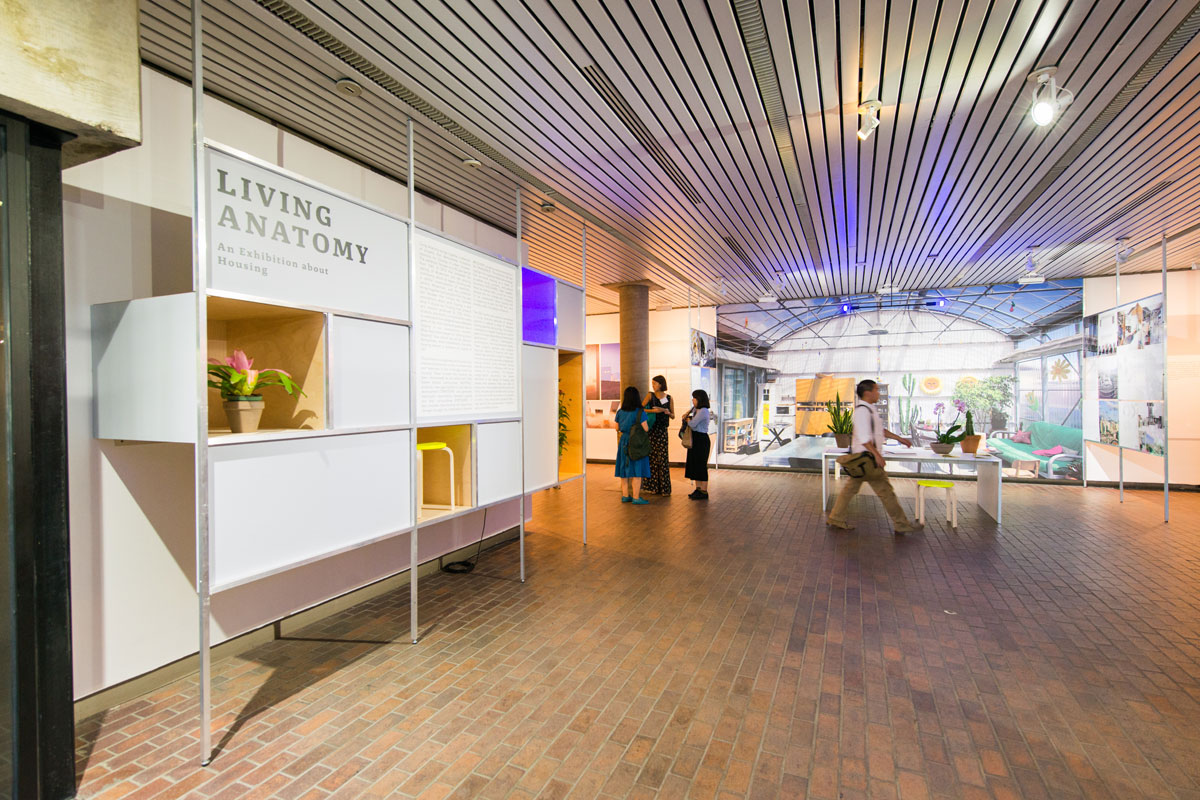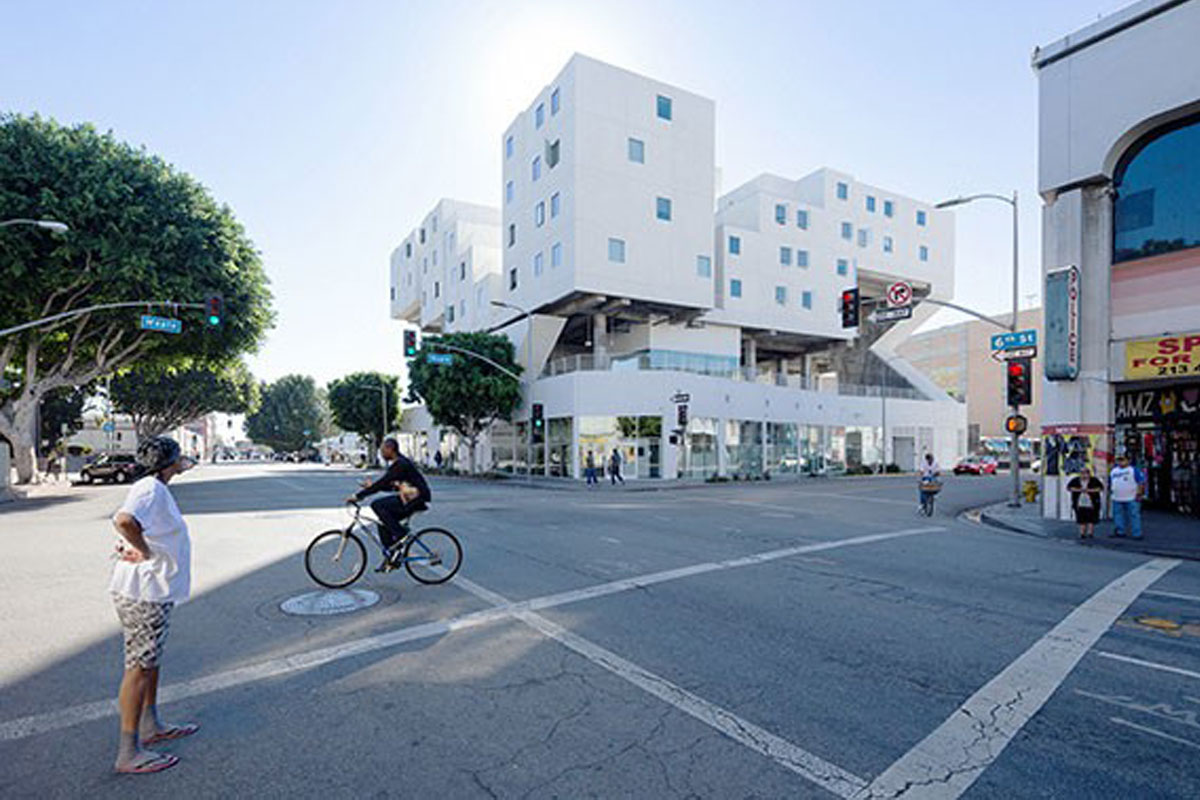Housing that reflects the world
It might be time to think a little deeper when looking around your home. The floor you are standing on is more than simply a place to put your feet. The ceiling above does more than just provide warmth and protection from the outside elements. These structures provide a clue into how communities work, how culture changes, and how discourse and policy are shaped.
These are crucial tenets behind Harvard’s Graduate School of Design (GSD) teachings on housing, and now the results of those lessons are on display for the community to see. Initiated by GSD Dean and Alexander and Victoria Wiley Professor of Design Mohsen Mostafavi and produced by a curatorial research team of the School’s faculty, staff, and students, “Living Anatomy: An Exhibition About Housing,” a multimedia show in the lobby of Gund Hall, just opened and will be on display until Dec. 20.
The exhibit — filled with interactive models, renderings, and texts — covers the walls of the lobby. The goal is to help answer questions about how housing has become a fundamental agent of change around the world in the last 50 years. The hope is that the discussion about design and building, both for the public and for those who work and study at GSD, will grow from a stroll through the space.
“We aim to show how housing has had such a large impact globally and how the School has had an active hand in the discussions and work around it,” said Travis Dagenais, communications specialist for the Graduate School of Design.
The display was part of a four-month effort to bring together a collection of work relevant to topics studied at GSD. The team chose to look at work from 1965 to now, a period that witnessed the waning of modernism. Instead of looking at one aspect of housing, the team dug into six areas.
“We really had the whole world within a 50-year period to play with,” said Matthew Gin, a Ph.D. and member of the curatorial research team. “There really was the idea of putting together something that could speak to the different voices and the different tones and inflexions of this conversation that we are having. That meant really casting a broad net and bringing in a whole range of different projects.”



